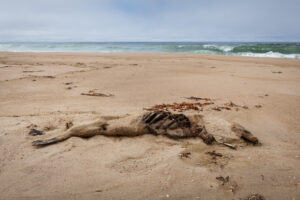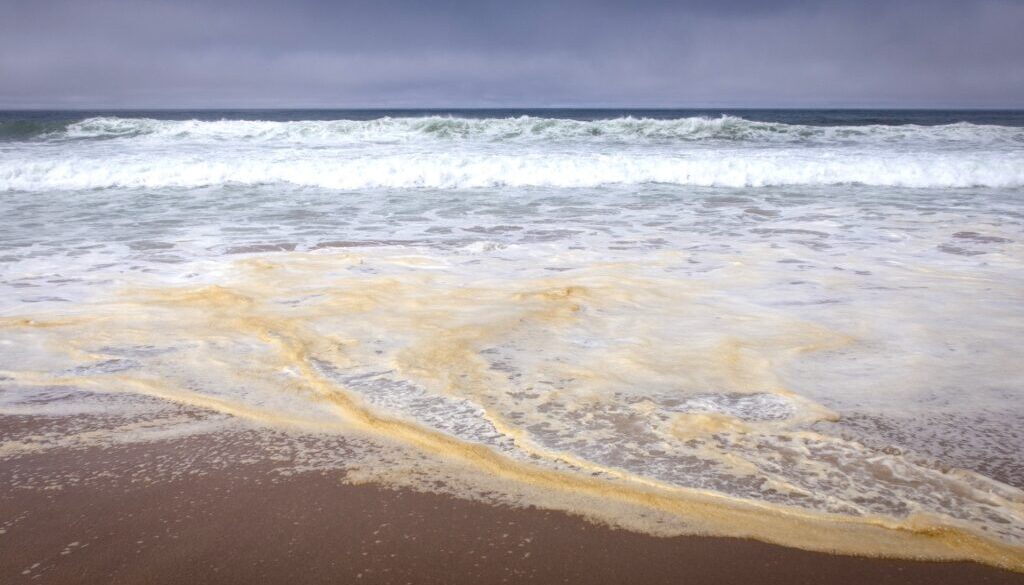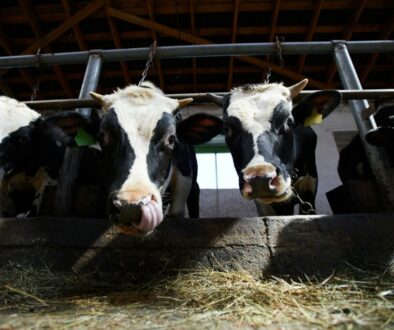Algae bloom kills hundreds of sea lions off California
Hundreds of sea lions off the coast of California have been poisoned this year amid a “highly unusual” algae bloom that has persisted in southern and central parts of the state into October.
Experts believe the blooms, which are becoming more common, may be linked to warming and changing ocean conditions. They harm sea life when algae produce a neurotoxic chemical that can be taken up by fish and crustaceans and absorbed by the larger animals that eat them.
Off the US west coast, the proliferations of algae, sometimes called “red tides”, usually peak in the late spring. For the last three years, however, harmful blooms have come on strong in the summer. This year, the bloom has persisted into autumn.
That is “highly unusual,” according to Clarissa Anderson, a researcher with the Scripps Institution of Oceanography, who is also the director of the Southern California Coastal Ocean Observing System, which tracks harmful algal blooms. “It’s catching us all off guard,” Anderson said.
Last year also saw a deadly bloom take a toll on sea life in southern California — thousands of sea lions and dolphins died in that event, which was further south than this year’s bloom and did not persist as long as this year’s has.
Michelle Berman Kowalewski, founder and director of the Channel Islands Cetacean Research Unit, said the organization responded to 120 dead dolphins in a single month in the 2023 event, compared to 35 in an average year.
When mammals such as sea lions are poisoned by the neurotoxin domoic acid generated by the algae blooms, they can suffer seizures and brain damage. Affected animals can die in the open ocean or become stranded on beaches.
The Channel Islands Marine & Wildlife Institute, which responds to calls about sick or injured wildlife in Santa Barbara and Ventura Counties northwest of Los Angeles, said it has attempted to treat 273 animals this year, which is 60% above average. The vast majority of those have been sea lions, and most of these die even with treatment, according to veterinarian Sam Dover, who co-founded the institute 18 years ago.

“The last three years, the domoic acid, the red tide, has been hitting us really hard,” Dover said. “This year was the hardest of the three. Each year it’s gotten progressively longer and worse.”
In 2022, the peak of the domoic acid poisoning event lasted 37 days. In 2023, it expanded to two months. This year, it’s been 93 days — and counting.
A recent visit to Guadalupe Dune Preserve, about 150 miles northwest of Los Angeles’ Manhattan Beach, revealed the presence of dozens of dead sea lions on the beach. Local rangers said the death toll was unlike anything they had seen before.
A separate California organization that responds to reports of stranded animals has also reported a significant increase in sea lion poisonings. The Marine Mammal Center, which covers 600 miles of beach north of Santa Barbara County, took in over 210 sickened sea lions this year, nearly a quarter of which we treated in September. That compares to only about two dozen sea lions that were treated in all of 2023, according to Emily Whitmer, a veterinarian with the center.
It is not known exactly why harmful algae blooms appear to be getting worse by some measures off the coast of California, Anderson said. Warming can sometimes help algae grow. But the type of algae that makes domoic acid, in the genus Pseudo-nitzschia, can thrive in colder water as well.
Some evidence suggests that these algae produce more toxins when certain nutrients are limited, such as silica. Blooms are generally caused by upwelling of nutrient-rich water, which happens when northwesterly winds interact with ocean currents and cause stirring in the deep — as well as fog.
Nutrient runoff can also play a role locally and close to the shore, and California’s record precipitation in 2023 led to more runoff than usual. But Anderson suggested that whatever is causing these blooms to increase over wide areas is likely to have more far-ranging oceanographic causes.
Climate change is altering the ocean’s chemistry by acidifying the water as it absorbs increasing levels of carbon dioxide. That could play a role as well, scientists say.
“You can get more toxin when you acidify the water in the lab,” Anderson said. But it is much more complicated than that, and research is ongoing to understand how multiple factors, such as ratios of varying nutrients, temperature, and acidity can affect toxin production.
Domoic acid affects not just sea lions and dolphins but also other animals, including fur seals, elephant seals, and birds such as pelicans that feed on fish.
Meanwhile, sea lions sickened by domoic acid are still being found by the Channel Islands Marine & Wildlife Institute’s treatment center south of Santa Barbara, something unheard of in the past.
“Each year the domoic acid has been getting worse and the death toll higher,” Dover said.
(Featured photo by Celia Talbot Tobin.)




